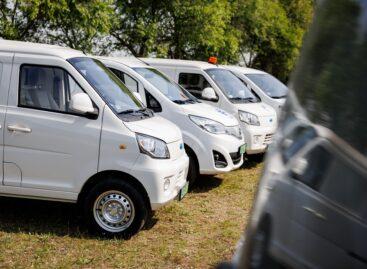EM: we are adapting a proven green energy subsidy to the changed market environment
The Mandatory Feed-in Tariff (KÁT), which encourages industrial-scale green energy investments, has catapulted Hungary to the forefront of Europe in solar production. However, its maintenance costs are constantly increasing, partly due to the increasingly frequent negative prices during times of oversupply during sunny hours. In order to reduce the burden on industrial consumers who bear the additional expenses, the government will suspend the inflation tracking of the mandatory feed-in tariff for five years, the Ministry of Energy (EM) told MTI on Friday.
 According to the further rule amendment currently in preparation, the owners and operators of investments that have already paid off in many cases will be able to leave the KÁT system and retain their exemption from paying the Robin Hood tax, but they will also be able to choose from other options. The latest government decision will help strengthen the Hungarian economy, transition to clean energy and achieve energy sovereignty, the statement says.
According to the further rule amendment currently in preparation, the owners and operators of investments that have already paid off in many cases will be able to leave the KÁT system and retain their exemption from paying the Robin Hood tax, but they will also be able to choose from other options. The latest government decision will help strengthen the Hungarian economy, transition to clean energy and achieve energy sovereignty, the statement says.
According to their description, it was possible to apply for support for renewable electricity production in the KÁT system until the end of 2016. The state encouraged the developments by typically undertaking a takeover obligation for a specific amount of electricity produced from clean sources for a period of 20-25 years, at inflation-tracking prices. Based on the issued entitlements, predominantly solar power plants were built, with a total installed capacity of 3,110 megawatts. The capacity of industrial-scale solar power systems in Hungary approached 4,100 megawatts by the beginning of 2025. More than three-quarters of the capacity of solar power plants above 50 kW, not producing for own purposes, was therefore created with KÁT support. These will produce electricity at a subsidized price in a phase-out system until 2049. Their production peak is expected to be reached this year and will be maintained at a roughly unchanged level until 2035.
It was reported that solar energy accounted for a quarter of domestic electricity production last year, thanks to the rapid expansion of industrial capacities. Hungary thus produced the highest proportion in Europe, surpassing Greece.
The increase in the utilization of green energy is a welcome development in terms of greening the energy sector and protecting the environment. At the same time, the spread of weather-dependent renewables poses new challenges for system operators. For example, during periods of oversupply, the market price of electricity is increasingly pushed into the negative range. In Hungary, in 2023, the exchange price of electricity was no higher than zero for 93 hours, which had already occurred more times the year before last than in the previous 10 years combined. In 2024, the number of these extraordinary cases tripled, to 306. Market revenue from the sale of electricity purchased at the mandatory price is also decreasing for this reason. The system operator shall charge the difference between the subsidized takeover price and the available selling price to industrial consumers.
Related news
EM: Hungarian companies can green their fleets with more than ten thousand electric vehicles
🎧 Hallgasd a cikket: Lejátszás Szünet Folytatás Leállítás Nyelv: Auto…
Read more >EM: more than 8,000 applicants in the corporate e-car program
🎧 Hallgasd a cikket: Lejátszás Szünet Folytatás Leállítás Nyelv: Auto…
Read more >Atria Finland modernises convenience food production
🎧 Hallgasd a cikket: Lejátszás Szünet Folytatás Leállítás Nyelv: Auto…
Read more >Related news
Challenges of the retail sector: retail has become more crisis-resistant
🎧 Hallgasd a cikket: Lejátszás Szünet Folytatás Leállítás Nyelv: Auto…
Read more >NGM: conscious shopping for peaceful holidays, consumer protection advice for the Christmas period
🎧 Hallgasd a cikket: Lejátszás Szünet Folytatás Leállítás Nyelv: Auto…
Read more >How to avoid the hassles of online shopping?
🎧 Hallgasd a cikket: Lejátszás Szünet Folytatás Leállítás Nyelv: Auto…
Read more >






